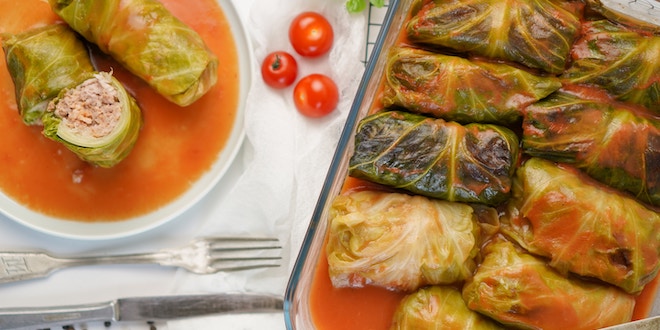
Last Updated on December 15, 2023
Romania, nestled in the heart of Eastern Europe, is a land steeped in history and culture, distinguished by its medieval castles, verdant landscapes, and a rich tapestry of traditions. Its architectural marvels range from the grandeur of Bran Castle, often associated with the legend of Dracula, to the rustic charm of its rural villages.
This country’s diverse cultural heritage is a mosaic of influences, seamlessly blending elements from its Slavic, Ottoman, and Austro-Hungarian past. While Romania is also popular for Romanian mail-order brides, so much so that there’s even a website where you can find them, the Romanian cuisine takes the spotlight.
Getting to Know the Signature Dishes of Romania
Romanian food is a vivid reflection of the country’s multifaceted history and geographical diversity. It is a cuisine that tells stories of conquests and crossroads, of landscapes ranging from the fertile plains of the Danube to the rugged peaks of the Carpathians.
Romanian dishes are deeply rooted in seasonal and local ingredients, with a focus on hearty, comforting flavors that evoke a sense of home and tradition. The culinary landscape of Romania is a splendid fusion of rustic simplicity and rich, savory indulgences, offering an authentic and memorable gastronomic experience.
1. Sarmale (Cabbage Rolls)
Perhaps the most iconic Romanian dish, Sarmale are cabbage rolls traditionally filled with a mixture of minced pork, rice, onions, and herbs. These rolls are lovingly wrapped in either pickled cabbage leaves or, in some regions, vine leaves, and then slow-cooked in a savory broth often enriched with smoked meat for added flavor.
Sarmale is a staple at Romanian celebrations, especially during Christmas and Easter, symbolizing abundance and festivity. This dish perfectly encapsulates the Romanian spirit of homeliness and comfort.
2. Mămăligă (Polenta)
Mămăligă, a simple yet beloved dish, is Romania’s answer to polenta. Made from yellow cornmeal, it is cooked with water and salt into a porridge-like consistency. Traditionally, it was seen as a peasant food but has gained widespread popularity across all social classes.
Mămăligă can be served as a side dish or a base for more elaborate toppings like cheese, sour cream, or the Romanian version of scrambled eggs known as ‘ochiuri’. It’s a versatile dish that reflects the simplicity and richness of Romanian rural life.
3. Ciorbă de burtă (Tripe Soup)
Ciorbă de burtă is a dish for the adventurous eater. This sour soup is made from beef tripe, and vegetables, and is often finished off with a dollop of sour cream and a sprinkle of garlic vinegar.
Its origins are a topic of debate, with some claiming influences from Turkish or Greek cuisine. Regardless of its beginnings, this soup has a unique place in Romanian cuisine and is particularly favored as a remedy after a night of revelry, owing to its hearty and invigorating qualities.
4. Mici (Grilled Minced Meat Rolls)
Mici, also known as “mititei”, are small, skinless sausages made of a blend of beef, pork, and lamb, seasoned with garlic, black pepper, thyme, and other spices. They are traditionally cooked on a grill, giving them a smoky flavor that’s hard to resist.
Often served with mustard and bread or alongside a helping of mămăligă, mici are a common sight at outdoor gatherings and barbecues, reflecting the Romanian love for communal dining and outdoor festivities.
5. Papanasi (Fried or Boiled Doughnuts)
Ending on a sweet note, Papanasi is a delightful Romanian dessert. These are doughnuts made from a mixture of cottage cheese, eggs, and flour, then fried to golden perfection or boiled.
They are typically served topped with sour cream and a generous helping of fruit jam, usually blueberry or sour cherry. Papanasi offers a balance of textures and flavors – the softness of the doughnut, the creaminess of the sour cream, and the sweet-tartness of the jam – making it a favorite treat among Romanians of all ages.
Each of these dishes tells a story of Romania’s culinary heritage, showcasing the influence of historical events, geographical landscapes, and cultural exchanges. Romanian cuisine is a testament to the country’s ability to absorb various influences while maintaining its unique character. When planning your trip to Romania, make sure to try these dishes to get a taste of the country’s rich culture and hospitality.
Source link






